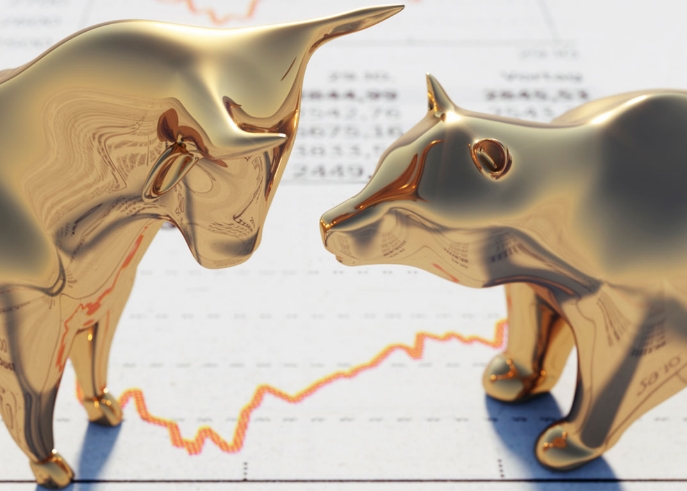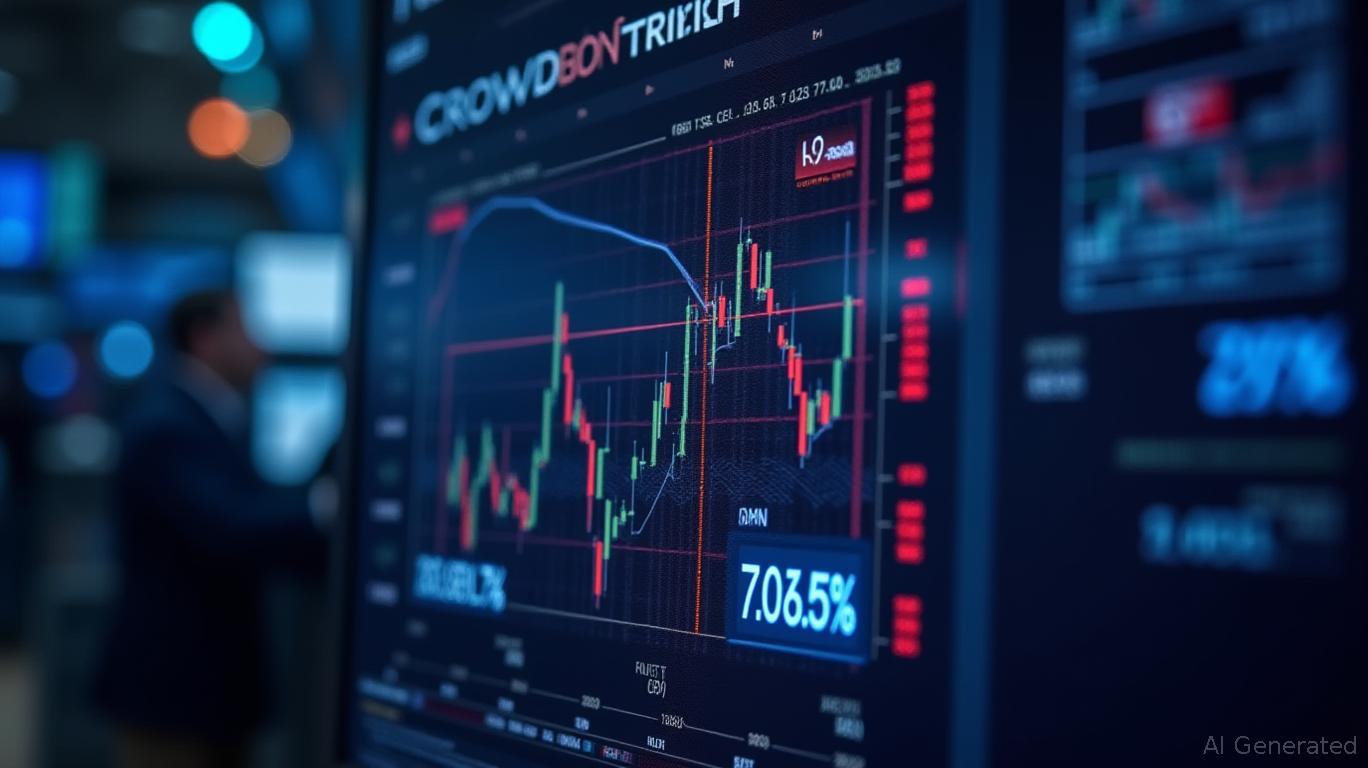Understanding the Key Drivers of Commodity Price Surges: A Case Study on Gold
Monday, Feb 10, 2025 8:20 pm ET
Introduction
In the world of investing, commodity prices can be both a source of opportunity and a challenge. Understanding what drives these prices is crucial for investors looking to navigate the volatile waters of commodity markets. This article will explore the key factors that lead to commodity price surges, focusing on gold as a case study. This topic is relevant to investors because commodities can serve as a hedge against inflation and economic uncertainty, offering diversification to an investment portfolio.
Core Concept Explanation
Commodity prices are influenced by a variety of factors, including supply and demand dynamics, geopolitical events, currency fluctuations, and macroeconomic trends. Supply refers to the availability of a commodity, while demand is the market's desire for it. When demand outstrips supply, prices tend to rise, and vice versa. Geopolitical tensions can disrupt supply chains, causing prices to spike. Currency fluctuations, particularly in the U.S. dollar, affect commodities priced in dollars, as a weaker dollar makes them cheaper for holders of other currencies. Lastly, macroeconomic trends, such as inflation and interest rates, also play a significant role in commodity pricing.
Application and Strategies
Investors can apply this understanding of commodity price drivers in several ways. For instance, they might monitor geopolitical events or economic data releases to anticipate potential price movements. Hedging strategies can be employed, such as investing in commodities when inflation is expected to rise. Diversification is another strategy, where investors allocate a portion of their portfolio to commodities to reduce risk and potentially enhance returns. For gold specifically, investors often view it as a safe haven, buying it during times of uncertainty or when they expect currency devaluation.
Case Study Analysis
To illustrate these concepts, let's examine the surge in gold prices during 2020. As the COVID-19 pandemic unfolded, economic uncertainty skyrocketed. Investors flocked to gold, driving its price to an all-time high of over $2,000 per ounce in August 2020. Several factors contributed to this surge:
Economic Uncertainty: The pandemic-induced economic downturn caused investors to seek safe havens.
Inflation Fears: Massive fiscal stimuli raised concerns about future inflation, prompting a shift to gold.
Currency Influence: The U.S. dollar weakened during this period, making gold cheaper for other currency holders.
These events highlight how understanding the drivers of commodity prices can help investors anticipate market movements and make informed decisions.
Risks and Considerations
Investing in commodities, while potentially lucrative, comes with risks. Prices can be highly volatile, influenced by unpredictable events. Investors should be aware of the potential for rapid price changes and the factors that drive these shifts. A robust risk management strategy is essential, such as setting stop-loss orders to limit potential losses and conducting thorough research to understand market conditions.
Moreover, not all commodities behave the same way; each has its unique factors influencing its price. Thus, investors should diversify across multiple commodities and not rely solely on one for portfolio performance.
Conclusion
In conclusion, understanding the key drivers of commodity price surges, particularly in the case of gold, can offer valuable insights for investors. By considering factors such as supply and demand, geopolitical events, economic trends, and currency movements, investors can better navigate the complexities of commodity markets. While risks exist, a well-informed and strategic approach can lead to successful investment outcomes. As always, thorough research and risk management are paramount.
In the world of investing, commodity prices can be both a source of opportunity and a challenge. Understanding what drives these prices is crucial for investors looking to navigate the volatile waters of commodity markets. This article will explore the key factors that lead to commodity price surges, focusing on gold as a case study. This topic is relevant to investors because commodities can serve as a hedge against inflation and economic uncertainty, offering diversification to an investment portfolio.
Core Concept Explanation
Commodity prices are influenced by a variety of factors, including supply and demand dynamics, geopolitical events, currency fluctuations, and macroeconomic trends. Supply refers to the availability of a commodity, while demand is the market's desire for it. When demand outstrips supply, prices tend to rise, and vice versa. Geopolitical tensions can disrupt supply chains, causing prices to spike. Currency fluctuations, particularly in the U.S. dollar, affect commodities priced in dollars, as a weaker dollar makes them cheaper for holders of other currencies. Lastly, macroeconomic trends, such as inflation and interest rates, also play a significant role in commodity pricing.
Application and Strategies
Investors can apply this understanding of commodity price drivers in several ways. For instance, they might monitor geopolitical events or economic data releases to anticipate potential price movements. Hedging strategies can be employed, such as investing in commodities when inflation is expected to rise. Diversification is another strategy, where investors allocate a portion of their portfolio to commodities to reduce risk and potentially enhance returns. For gold specifically, investors often view it as a safe haven, buying it during times of uncertainty or when they expect currency devaluation.
Case Study Analysis
To illustrate these concepts, let's examine the surge in gold prices during 2020. As the COVID-19 pandemic unfolded, economic uncertainty skyrocketed. Investors flocked to gold, driving its price to an all-time high of over $2,000 per ounce in August 2020. Several factors contributed to this surge:
Economic Uncertainty: The pandemic-induced economic downturn caused investors to seek safe havens.
Inflation Fears: Massive fiscal stimuli raised concerns about future inflation, prompting a shift to gold.
Currency Influence: The U.S. dollar weakened during this period, making gold cheaper for other currency holders.
These events highlight how understanding the drivers of commodity prices can help investors anticipate market movements and make informed decisions.
Risks and Considerations
Investing in commodities, while potentially lucrative, comes with risks. Prices can be highly volatile, influenced by unpredictable events. Investors should be aware of the potential for rapid price changes and the factors that drive these shifts. A robust risk management strategy is essential, such as setting stop-loss orders to limit potential losses and conducting thorough research to understand market conditions.
Moreover, not all commodities behave the same way; each has its unique factors influencing its price. Thus, investors should diversify across multiple commodities and not rely solely on one for portfolio performance.
Conclusion
In conclusion, understanding the key drivers of commodity price surges, particularly in the case of gold, can offer valuable insights for investors. By considering factors such as supply and demand, geopolitical events, economic trends, and currency movements, investors can better navigate the complexities of commodity markets. While risks exist, a well-informed and strategic approach can lead to successful investment outcomes. As always, thorough research and risk management are paramount.










